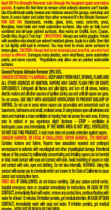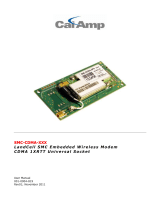Motorola CDMA 800/1900 MHz
This device is a high-quality digital wireless telephone that offers a range of advanced features and capabilities. With its sleek design and user-friendly interface, this phone is perfect for staying connected on the go.
Motorola CDMA 800/1900 MHz
This device is a high-quality digital wireless telephone that offers a range of advanced features and capabilities. With its sleek design and user-friendly interface, this phone is perfect for staying connected on the go.




















-
 1
1
-
 2
2
-
 3
3
-
 4
4
-
 5
5
-
 6
6
-
 7
7
-
 8
8
-
 9
9
-
 10
10
-
 11
11
-
 12
12
-
 13
13
-
 14
14
-
 15
15
-
 16
16
-
 17
17
-
 18
18
-
 19
19
-
 20
20
-
 21
21
-
 22
22
-
 23
23
-
 24
24
-
 25
25
-
 26
26
-
 27
27
-
 28
28
-
 29
29
-
 30
30
-
 31
31
-
 32
32
-
 33
33
-
 34
34
-
 35
35
-
 36
36
-
 37
37
-
 38
38
-
 39
39
-
 40
40
-
 41
41
-
 42
42
-
 43
43
-
 44
44
-
 45
45
-
 46
46
-
 47
47
-
 48
48
Motorola CDMA 800/1900 MHz
This device is a high-quality digital wireless telephone that offers a range of advanced features and capabilities. With its sleek design and user-friendly interface, this phone is perfect for staying connected on the go.
Ask a question and I''ll find the answer in the document
Finding information in a document is now easier with AI
Related papers
-
Motorola L6 GSM 1900 MHz User manual
-
Motorola MOTORAZR2 V9 User manual
-
Motorola MOTORAZR maxx V6 User manual
-
Motorola E685 User manual
-
Motorola MOTORIZR Z6 User manual
-
Motorola V235 User manual
-
Motorola Q GSM User manual
-
Motorola MOTO U9 User manual
-
Motorola PEBL U6 User manual
-
Motorola DC800 User manual
Other documents
-
Cirago HS-410SB Datasheet
-
 Goof Off FG661 User manual
Goof Off FG661 User manual
-
VTech ML17939 Datasheet
-
Targus PAUK001EUZ-04 Datasheet
-
 CalAmp Landcell SMC CDMA User manual
CalAmp Landcell SMC CDMA User manual
-
Zebra MC659B-PD0BAA00100 User manual
-
Zebra MC659B-PD0BAF00100 Datasheet
-
Zebra MC659B-PD0BSF00100 Datasheet
-
Targus AKB13CA Datasheet
-
Tait TMAA10-07 Installation guide

















































